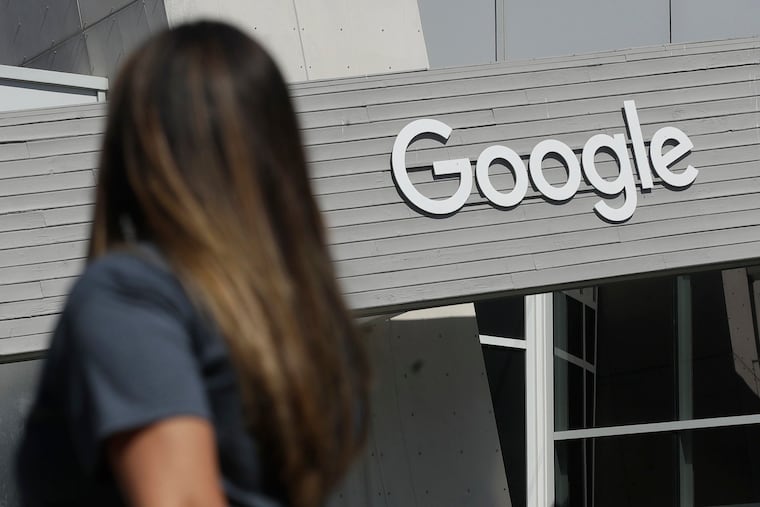Small businesses need to answer these 3 questions before advertising on Google
Before jumping into advertising on Google, small businesses need to answer a few key questions and respond to prospects once they're found.

There’s a lot of upside for a small business that wants to advertise with Google. For starters, it can be less expensive than other forms of advertising, such as television and radio. And the ads can be more specifically targeted to local markets of active buyers, where clicks can be measured and tracked using the company’s analytical tools. Research also shows that 90% of people who use the internet see Google ads, and 63% of people searching on Google are likely to click on them.
“If you’re looking for local customers, or if you’re targeting a specific local market, then Google Ads is the place to be,” said Adam Roseland, the founder of digital marketing firm 814 Interactive in Berwyn. “People looking for things are doing a specific keyword search — like a local plumber near Devon, or, finding pizza near Berwyn — as opposed to stumbling on to a business by hearing a radio ad or seeing a TV commercial.”
Matt Davidson, who runs Social Fire Media, a digital marketing firm based in Blue Bell, agreed. “You can be super relevant to people locally because you’re a local provider,” he said. “And the great thing is that you’re only spending money when someone clicks on your ad.”
It sounds fantastic. But, like anything else, succeeding on Google is not easy. It’s a competitive environment where big brands are spending big money on the keywords that drive visitors. It’s an endlessly shifting landscape of search terms and keywords that needs monitoring. And it’s a money pit for the uninformed. But both Roseland and Davidson are confident small businesses can compete and win, just as long as they’re ready to answer three critical questions.
The first: What’s your objective?
Are you trying to sell products online? Do you want prospective customers to call you? Is it important to drive visitors to your store or restaurant or to register for an event or request more information from your website? Knowing what you want — and then closely tracking clicks — will help you determine whether your campaign is getting the right results. This doesn’t happen overnight. It requires testing and more testing. Which is why both Roseland and Davidson said they need anywhere from 60 to 90 days to figure out the right message that meets their clients’ objectives.
“You need to determine who is your customer and what are their pain points,” Roseland said. “That way you can create an ad that says how you can solve their problems.”
The next question is a big one: What are your keywords?
Google is, at its core, a search engine. For someone to see your ad, they have to be searching based on a word or phrase. The more popular the phrase, the more buyers there are for the keyword and the higher the cost. Finding the right (and affordable) keyword or phrase is both science and art and will be critical to success. Besides getting help from Google Analytics, there are great and inexpensive tools — like those provided by SEMrush, Moz, and SpyFu — that can help. But in the end, it will be about trial and error and extensive testing.
There are also tricks that only experienced marketers can bring to the table. For example, Davidson has his clients create campaigns that include both keywords and “negative” keywords, which are words that are excluded from a search such as a competitor name that could lead to irrelevant matches.
“We’re frequently having our clients change keywords, test out new words, pause tests, and try out new combinations,” he said. “In the end you’re really just trying to find a buyer, not someone who’s just looking around or at the beginning of the buying process.”
Finally, you need to ask yourself: What is your targeted return on investment?
To answer this question, you need to determine what the lifetime profitability value is of a customer. Then it’s all about the math. Davidson and Roseland said that most campaigns they manage begin at $500 to $1,000 per month and can easily be more. They can usually generate a certain amount of leads based on that budget. But how many of those leads will convert into an actual sale, and how much will that actual sale be?
According to Davidson, you may not see the profits right away, but if you’re a pest control company or a plumber, a customer can stay for years and spend thousands of dollars.
“So paying $500 for that lead generate a great return on investment over the long term.”
And make sure you follow up on those leads
It may seem hard to believe, but both Roseland and Davidson admit that their biggest challenge after a client spends money with Google is getting them to actually respond to prospects. And the problem only becomes worse the more successful the campaign. So, have a good follow-up process in place and make sure you’re ready for success.
“Be prepared to scale when this thing works,” Roseland said. “If you can show profit for a small number of leads generated then you’ll be ready to really take advantage.”
Gene Marks is a certified public accountant and the owner of the Marks Group, a technology and financial management consulting firm in Bala Cynwyd.